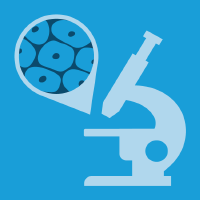Topic Menu
► Topic MenuTopic Editors


Advances in Red Blood Cells Research
Topic Information
Dear Colleagues,
Red blood cells (RBCs) are the most abundant cells in mammals, including humans. They serve a well-known and well-described vital function. Furthermore, they are increasingly recognized as biomarkers for various pathophysiological conditions ranging from RBC-related diseases, such as hereditary and acquired anemias, to states and diseases that are not primarily linked to RBCs, such as inflammation, cancer, diabetes, and cardiovascular disorders. Adaptation to environmental stressors such as hypoxia, hyper- and hypothermia, and practicing endurance and extreme sports also impacts the numbers and properties of red blood cells. Exploring the processes driving stem cells into erythroid differentiation and proliferation during erythropoiesis allows producing red blood cells of rare groups or those that may be used for transfusion for all patients. Today, “making one’s own red blood cells in a bioreaction” is a realistic future option; developing optimal methods for preserving red cells obtained from donors and storage in blood banks is of decisive importance for successful outcomes from blood transfusions. We are pleased to invite you to contribute original articles, short communications, reviews, and opinion articles (mini-reviews) covering the entire field of RBC research, including (but not limited to):
- Erythropoiesis;
- Membrane transport;
- Biophysical and biochemical RBC properties;
- Collective phenomena;
- The genesis, management, and treatment of diseases;
- The use of RBCs as drug carriers or biomarkers;
- Adaptations to stress.
Prof. Dr. Lars Kaestner
Prof. Dr. Anna Bogdanova
Topic Editors
Keywords
- red blood cells
- metabolism
- shape
- adaptation
- anemia
- erythropoiesis
- blood storage
- senescence and clearance
- signaling
Participating Journals
| Journal Name | Impact Factor | CiteScore | Launched Year | First Decision (median) | APC |
|---|---|---|---|---|---|

Biomolecules
|
5.5 | 8.3 | 2011 | 16.9 Days | CHF 2700 |

Cells
|
6.0 | 9.0 | 2012 | 16.6 Days | CHF 2700 |

International Journal of Molecular Sciences
|
5.6 | 7.8 | 2000 | 16.3 Days | CHF 2900 |

Journal of Developmental Biology
|
2.7 | 3.7 | 2013 | 19.1 Days | CHF 1800 |

Journal of Molecular Pathology
|
- | - | 2020 | 24.9 Days | CHF 1000 |

MDPI Topics is cooperating with Preprints.org and has built a direct connection between MDPI journals and Preprints.org. Authors are encouraged to enjoy the benefits by posting a preprint at Preprints.org prior to publication:
- Immediately share your ideas ahead of publication and establish your research priority;
- Protect your idea from being stolen with this time-stamped preprint article;
- Enhance the exposure and impact of your research;
- Receive feedback from your peers in advance;
- Have it indexed in Web of Science (Preprint Citation Index), Google Scholar, Crossref, SHARE, PrePubMed, Scilit and Europe PMC.

